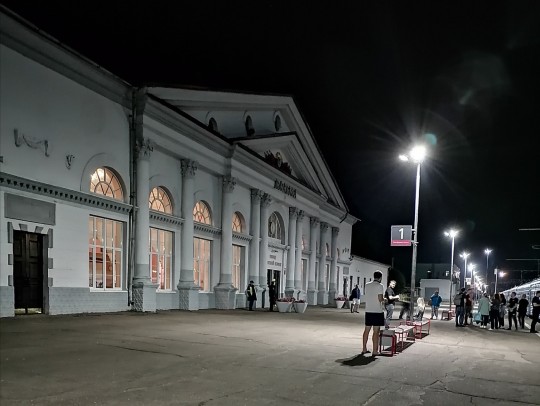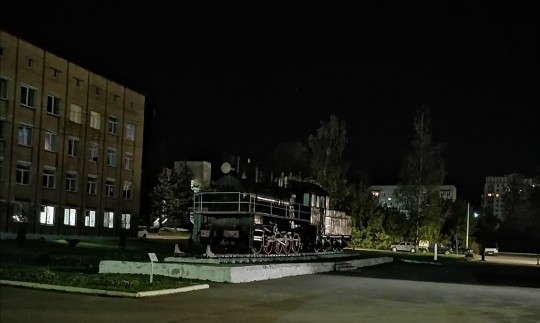#vyazma
Text
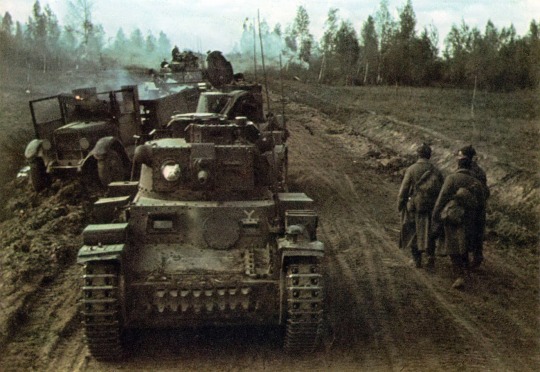
Une colonne de blindés de la brigade Koll – Bataille de Viazma-Briansk – Opération Barbarossa – Viazma – Union soviétique – 2 octobre 1941
Photographe : Helmut Ritgen
#WWII#front est#eastern front#opération barbarossa#operation barbarossa#barbarossa#bataille de viazma-briansk#battle of vyazma-briansk#armée allemande#german army#wehrmacht#heer#brigade koll#koll brigade#viazma#vyazma#union soviétique#soviet union#urss#ussr#02/10/1941#10/1941#1941
8 notes
·
View notes
Photo
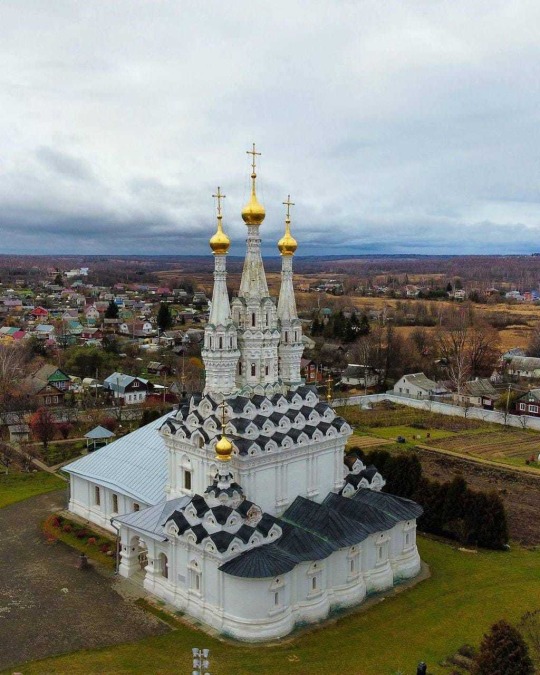
Hodegetria church, Vyazma, Smolensk Oblast
Photo: Dmitriy Gusev
36 notes
·
View notes
Text
it says the word "foodstuffs" on the battle of vyazma wikipedia page....
4 notes
·
View notes
Note
what are your favorite names? i feel like you’ve got good taste in names
I absolutely love collecting names, some of my favourites are: alastair, athanasia, alcide, caius, constance, caspian, clarence, charna, cian, cillian, cozbi, quill, kuzma, kirill/cyril, kruna, kosa, damia and damien, dmitra and dmitar, vedast, vyazma, vissia, velizar, velimir, vela, nestor, zachary, sutton, senka
12 notes
·
View notes
Text
One dead as bridge falls on railway in Russia
The incident in the western city of Vyazma halts all train traffic, cutting gas supplies to many people.
from BBC News https://ift.tt/LnCr7u0
via IFTTT
View On WordPress
0 notes
Text
The Battle of Vyazma on 3 November 1812 by Peter von Hess

The Battle of Vyazma (3 November 1812; 22 October by OS), occurred at the beginning of Napoleon's retreat from Moscow. In this encounter a Russian force commanded by General Miloradovich inflicted heavy losses on the rear guard of the Grande Armée. Although the French thwarted Miloradovich's goal of encircling and destroying the corps of Marshal Davout, they withdrew in a partial state of disorder due to ongoing Russian harassment and heavy artillery bombardments. The French reversal at Vyazma, although indecisive, was significant due to its damaging impact on several corps of Napoleon's retreating army.
At 8 am on 3 November, Miloradovich's cavalry attacked the disorganized French column holding the length of road which separated the I Corps from the IV and V Corps. Miloradovich also ordered his artillery, positioned on nearby heights, to begin a cannonade. With beautiful warm weather with bright sunshine the attack was a complete success, as it captured the French IV Corps baggage train and sent the French troops fleeing in disarray. Miloradovich then placed infantrymen and horse batteries astraddle the road, thereby severing Davout's connection with the rest of the French army.
Simultaneous to Miloradovich's attack to the west of Davout, Platov's Cossacks attacked Davout from the east, supported by Paskevich's troops. Davout's infantrymen formed squares to meet the attack from Platov and Paskevich, and his artillerymen set up their pieces to return Miloradovich's fire. The 14,000 exhausted, hunger-weakened soldiers of Davout's Corps were now at risk of being overwhelmed and destroyed by the Russians.
At 4 pm, the fighting spread into the town of Vyazma itself, which at this point was consumed by flames. By now the infantry of General Choglokov (from Ostermann-Tolstoy's corps), as well as detachments of Platov's Cossacks were engaging the French in torrid, close quarters combat on the streets of Vyazma. The French were hard pressed, and had to fight desperately to hold the Russians off while evacuating the town.
By 8 pm, the fighting was over. The corps of Davout, Eugène, and Poniatowski/Zajączek had retreated west of Vyazma, bruised but safe. Ney's rearguard was last to withdraw from the town, suffering heavy losses in a final bayonet fight with a force of Russian grenadiers.
In order to cover their retreat, the French had set large sections of Vyazma on fire, resulting in many wounded from both sides burning to death. Worse yet, the French are reported to have locked civilians and Russian prisoners in buildings before setting them aflame. Russian troops pouring into the town were able to save some of these victims.
That evening, Ney's corps remained on the western outskirts of Vyazma to block the Russians. However, given the Russians' aggression, great danger remained, and according to Caulaincourt, even Ney had to "continue his retreating movement before dawn in order not to risk the loss of his troops."
The next day, withdrawing along a road heaped for miles with burning, overturned wagons, and blown-up ammunition caches, Ney dispatched an entire series of grim reports to Napoleon detailing the lost battle.
The Battle of Vyazma represented a defeat of the Grande Armée's rearguard, as French losses in this battle, 6,000 to 8,000 casualties, including 4,000 lost as prisoners to the Russians, were prohibitive.[citation needed] The shock of the Russian attack reduced many French units to a state of disarray, and owing to the speed with which their retreat had to be resumed, order was never restored within them. These disorganized units became easy targets for Cossack raids in the following days.
Russian casualties at Vyazma were no more than 1,800 killed and wounded, out of 26,500 troops involved. But Napoleon reached Smolensk thus saving the remnants of his troops for the subsequent Battle of Krasnoi. Sources. French invasion of Russia, The Battle of Vyazma, from Wikipedia, the free encyclopedia
youtube
#Отечественная война 1812 года#War of 1812#Художник#Начинающий художник#famous artists#Эрмитаж#Hermitage Museum#Russian Empire#Российская империя#История России#Наполеон#Napoleon Bonaparte#Михаил Кутузов#Mikhail Kutuzov#Peter von Hess#Наполеоновские войны#theintexp#Youtube
1 note
·
View note
Text
Saints&Reading: Wednesday, January 3, 2024
december 21_january 3
SAINT JULIANIA, PRINCESS OF VYAZEMSK AND NOVOTORZH(1406)

Saint Juliana, Princess of Vyazma and Novy Torg, a daughter of the noble Maximus Danilov, was known for her virtues and her chastity. Her spouse, Prince Simeon of Vyazma, and also Prince Yuri of Smolensk, were compelled to flee their native lands, which the Lithuanian prince Vitovt had seized. Then Prince Basil of Moscow bestowed the Tver city of Torzhok upon the exiled princes.
Prince Yuri became captivated by Juliana’s beauty and tried in every way to persuade her to commit adultery, but Juliana remained faithful to her husband. During a feast, Prince Yuri killed Juliana’s husband, in the hope of taking her by force. Saint Juliana resisted the ravisher, wounding him with a knife. The enraged Prince Yuri ordered that her hands and feet be cut off, and that her body be thrown into the Tvertsa River.
Troubled by his conscience and censured by everyone, Prince Yuri fled to the Tatars, but even there he did not find peace. He settled in the Ryazan wilderness where he died in 1408.
The martyrdom of Saint Juliana occurred in the winter of 1406. In the spring of 1407, they saw the body of Princess Juliana floating in the river. A certain peasant heard a voice from above, commanding that the body of Saint Juliana be buried in the Torzhok cathedral on the right side by the south doors.
A tomb for her body was afterwards built at the Savior-Transfiguration cathedral, where many received healing from her. In connection with the glorification of Saint Juliana on June 2, 1819 a chapel was built on the right-hand side, and dedicated to her. At the cathedral of the Transfiguration of the Lord, where earlier there had been a chapel over the grave of the saint, a church was built and also dedicated to Saint Juliana in 1906.
SAINT PETER, METROPOLITAN OF ALL RUSSIA (1326)

Saint Peter, Metropolitan of Moscow, was born in Volhynia of pious parents, Theodore and Eupraxia. Even before the birth of her son, the Lord revealed to Eupraxia the preordained blessedness of her son. At the age of twelve, young Peter entered a monastery. He successfully studied the book sciences of those times and eagerly fulfilled his monastic obediences. The future saint devoted much time to an attentive study of the Holy Scriptures, and he also learned iconography. The icons painted by Saint Peter were distributed to the brethren and to Christians who visited the monastery.
Because of his virtuous and ascetic life, the igumen of the monastery had Saint Peter ordained as a hieromonk. After years of ascetic labors at the monastery, the hieromonk Peter, with the blessing of the igumen, left the monastery in search of a solitary place.
He built a cell at the Rata River and began to pursue asceticism in silence. Afterwards, at the place of his ascetic exploits, a monastery was formed, called the Novodvorsk. A church dedicated to the Savior was built for the monks who came to him. Chosen as igumen, Saint Peter guided his spiritual children, and never became angry with a guilty monk. Instead, he instructed the brethren by word and by example. The virtuous igumen and ascetic became known far beyond the vicinity of the monastery. Prince Yuri of Galicia frequently visited the monastery in order to receive spiritual instruction from the holy ascetic.
Once, in his travels through the Russian land, Metropolitan Maximus of Kiev and Vladimir (December 6) visited the monastery with words of instruction and edification. Having received the blessing of Saint Maximus, Saint Peter presented him with an icon of the Dormition of the Most Holy Theotokos, which he had painted. Saint Maximus prayed before the icon for the salvation of the Russian land entrusted to him by God until the end of his days.
When Metropolitan Maximus died, the See of Vladimir remained for a certain time unoccupied. An abbot named Gerontius, aspiring to become the primate of Russia, went to Constantinople with Saint Peter’s vestments, archpastoral staff, and the icon he had painted. The Great Prince of Vladimir, Saint Michael of Tver (November 22), sent him to the Patriarch of Constantinople with a petition that he be appointed as Metropolitan of Russia.
On the suggestion of Prince Yuri of Galicia, Igumen Peter reluctantly went to the Patriarch of Constantinople with a petition that he be consecrated as Metropolitan. God chose Saint Peter to nourish the Russian Church. The Mother of God appeared to Gerontius during a storm on the Black Sea and said, “You labor in vain, for you will never be bishop. The one who painted this icon, the Rata igumen Peter, shall be elevated to the throne of Kiev.”
The words of the Mother of God were fulfilled. Patriarch Athanasius of Constantinople (1289-1293) elevated Saint Peter as Metropolitan of Russia, bestowing upon him the hierarchal vestments, staff and icon, brought by Gerontius. Upon his return to Russia in 1308, Metropolitan Peter arrived at Kiev after a year, and then proceeded on to Vladimir.
The chief hierarch was tested by many trials during his first years of guiding the Russian metropolitanate. Suffering beneath the Tatar (Mongol) Yoke the Russian land was in turmoil, and Saint Peter was often obliged to change the place of his residence. During this period the saint’s labors and concerns to affirm the true Faith and morality in the realm were particularly important. On his journeys throughout the diocese, he incessantly instructed the people and clergy on preserving Christian piety. He also brought quarrelsome princes to peace and unity.
In the year 1312 the saint made a journey to the Horde, where he received a decree from Khan Uzbek, safeguarding the rights of the Russian clergy.
In 1325 Metropolitan Peter, at the request of Great Prince John Kalita (1328-1340), transferred the metropolitan See from Vladimir to Moscow. This event had very great significance for all the Russian land. Saint Peter prophetically predicted deliverance from the Tatar Yoke and that Moscow would become the foremost city in Russia.
With his blessing, the foundation of the cathedral of the Dormition of the Most Holy Theotokos in the Moscow Kremlin was laid in August 1326.
Saint Peter fell asleep in the Lord on December 21, 1326. The holy relics of the saint were buried in the Dormition cathedral in a stone crypt, which he himself had prepared. Many miracles were accomplished through the saint’s prayers. Many healings were even done secretly, which testifies to his profound humility even after death.
The veneration of the first hierarch of the Russian Church was affirmed and spread throughout the Russian land. In 1339, under Saint Theognostus (March 14), Saint Peter was numbered among the saints. Princes kissed the cross on the saint’s tomb as a sign of their fidelity to the Great Prince of Moscow.
As a particularly venerated protector of Moscow, Saint Peter was called on to witness the drawing up of government treaties. The people of Novgorod once had the right of nominating their own bishop in the cathedral of Saint Sophia. After their annexation to Moscow under Ivan III, they swore an oath that henceforth they would only consecrate their archbishops at the grave of Saint Peter the Wonderworker. And it was at the grave of the saint that the first hierarchs of Russia were named and chosen.
The Russian Chronicles mention him frequently, and no significant state undertaking was initiated without prayers at the grave of Saint Peter. The relics of Saint Peter were transferred in 1472 and 1479.
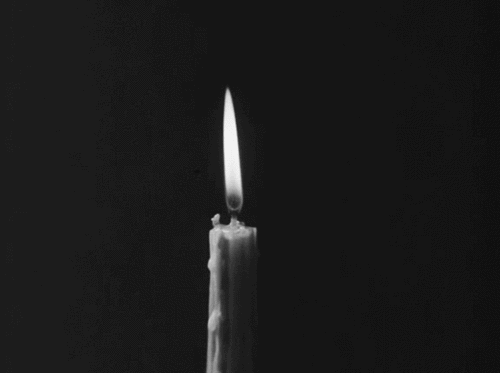

HEBREWS 7:26-8:2
26 For such a High Priest was fitting for us, who is holy, harmless, undefiled, separate from sinners, and has become higher than the heavens; 27 who does not need daily, as those high priests, to offer up sacrifices, first for His own sins and then for the people's, for this He did once for all when He offered up Himself. 28 For the law appoints as high priests men who have weakness, but the word of the oath, which came after the law, appoints the Son who has been perfected forever.
1 Now this is the main point of the things we are saying: We have such a High Priest, who is seated at the right hand of the throne of the Majesty in the heavens, 2 a Minister of the sanctuary and of the true tabernacle which the Lord erected, and not man.
LUKE 6:17-23
17 And He came down with them and stood on a level place with a crowd of His disciples and a great multitude of people from all Judea and Jerusalem, and from the seacoast of Tyre and Sidon, who came to hear Him and be healed of their diseases, 18 as well as those who were tormented with unclean spirits. And they were healed. 19 And the whole multitude sought to touch Him, for power went out from Him and healed them all. 20 Then He lifted up His eyes toward His disciples, and said: Blessed are you poor, For yours is the kingdom of God. 21 Blessed are you who hunger now, For you shall be filled. Blessed are you who weep now, For you shall laugh. 22 Blessed are you when men hate you, And when they exclude you, And revile you, and cast out your name as evil, For the Son of Man's sake. 23 Rejoice in that day and leap for joy! For indeed your reward is great in heaven, For in like manner their fathers did to the prophets.
#orthodoxy#orthodoxchristianity#easternorthodoxchurch#originofchristianity#spirituality#holyscriptures#gospel#bible#wisdom#saints
1 note
·
View note
Text
Random Real Thoroughbred: VIKAR
VIKAR is a bay horse born in Russia in 2002. By CORVINIUS out of VYAZMA.
Link to their pedigreequery page: https://www.pedigreequery.com/vikar
0 notes
Text
Events 11.3 (before 1960)
361 – Emperor Constantius II dies of a fever at Mopsuestia in Cilicia; on his deathbed he is baptised and declares his cousin Julian rightful successor.
1333 – The River Arno floods causing massive damage in Florence as recorded by the Florentine chronicler Giovanni Villani.
1468 – Liège is sacked by Charles I of Burgundy's troops.
1492 – Peace of Etaples between Henry VII of England and Charles VIII of France.
1493 – Christopher Columbus first sights the island of Dominica in the Caribbean Sea.
1534 – English Parliament passes the first Act of Supremacy, making King Henry VIII head of the Anglican Church, supplanting the pope and the Roman Catholic Church.
1783 – The American Continental Army is disbanded.
1793 – French playwright, journalist and feminist Olympe de Gouges is guillotined.
1812 – Napoleon's armies are defeated at the Battle of Vyazma.
1817 – The Bank of Montreal, Canada's oldest chartered bank, opens in Montreal.
1838 – The Times of India, the world's largest circulated English language daily broadsheet newspaper is founded as The Bombay Times and Journal of Commerce.
1848 – A greatly revised Dutch constitution, which transfers much authority from the king to his parliament and ministers, is proclaimed.
1867 – Giuseppe Garibaldi and his followers are defeated in the Battle of Mentana and fail to end the Pope's Temporal power in Rome (it would be achieved three years later).
1868 – John Willis Menard (R-LA) was the first African American elected to the United States Congress. Because of an electoral challenge, he was never seated.
1881 – The Mapuche uprising of 1881 begins in Chile.
1898 – France withdraws its troops from Fashoda (now in Sudan), ending the Fashoda Incident.
1903 – With the encouragement of the United States, Panama separates from Colombia.
1908 – William Howard Taft is elected the 27th President of the United States.
1911 – Chevrolet officially enters the automobile market in competition with the Ford Model T.
1918 – The German Revolution of 1918–19 begins when 40,000 sailors take over the port in Kiel.
1920 – Russian Civil War: The Russian Army retreats to Crimea, after a successful offensive by the Red Army and Revolutionary Insurgent Army of Ukraine.
1929 – The Gwangju Student Independence Movement occurred.
1930 – Getúlio Vargas becomes Head of the Provisional Government in Brazil after a bloodless coup on October 24.
1932 – Panagis Tsaldaris becomes the 142nd Prime Minister of Greece.
1935 – George II of Greece regains his throne through a popular, though possibly fixed, plebiscite.
1936 – Franklin D. Roosevelt is elected the 32nd President of the United States.
1942 – World War II: The Koli Point action begins during the Guadalcanal Campaign and ends on November 12.
1943 – World War II: Five hundred aircraft of the U.S. 8th Air Force devastate Wilhelmshaven harbor in Germany.
1944 – World War II: Two supreme commanders of the Slovak National Uprising, Generals Ján Golian and Rudolf Viest, are captured, tortured and later executed by German forces.
1946 – The Constitution of Japan is adopted through Emperor's assent.
1949 – Chinese Civil War: The Battle of Dengbu Island occurs.
1950 – Air India Flight 245 crashes into Mont Blanc, while on approach to Geneva Airport, killing all 48 people on board.
1956 – Suez Crisis: The Khan Yunis killings by the Israel Defense Forces in Egyptian-controlled Gaza result in the deaths of 275 Palestinians.
1956 – Hungarian Revolution: A new Hungarian government is formed, in which many members of banned non-Communist parties participate. János Kádár and Ferenc Münnich form a counter-government in Moscow as Soviet troops prepare for the final assault.
1957 – Sputnik program: The Soviet Union launches Sputnik 2. On board is the first animal to enter orbit, a dog named Laika.
0 notes
Link
Síguenos en Substack https://revistadehistoria.substack.com/ Lee cada día nuevos Artículos Históricos GRATIS: https://revistadehistoria.es/registro-gratuito/ IIGM – 138💥Batalla de MOSCU – Bolsas de Briansk y Vyazma
0 notes
Text
Marinha acompanhou dois navios russos ao largo da costa continental
A Marinha Portuguesa anunciou que acompanhou, no dia de ontem, a passagem de dois navios russos pela costa portuguesa, enquanto navegavam em trânsito para transportar combustível e carga a granel.
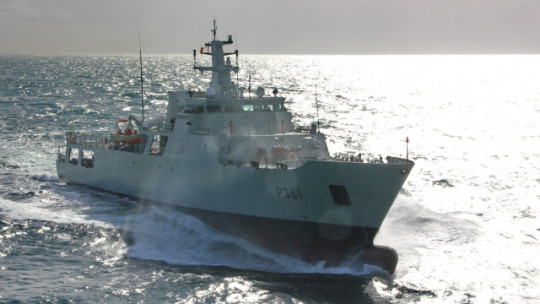
Em comunicado, as autoridades contaram que foram mobilizadas as lanchas de fiscalização rápida NRP Dragão e NRP Sagitário, e o acompanhamento foi feito entre o dia de 31 de maio e o dia de ontem.
As duas embarcações monitorizadas consistiam então no navio 'Vyazma', de transporte de combustível, e o navio 'Mekhanik Makarin', de transporte de carga a granel.
"A monitorização de unidades navais russas decorre da defesa dos interesses nacionais e do exercício da autoridade do Estado no Mar, e é um procedimento que representa um forte contributo para a segurança e recolha de informação de meios não aliados", explica a Marinha, em comunicado.
Esta não é a primeira que a Marinha monitoriza uma destas passagens, com os navios russos que transportam carga entre o Mar do Norte e o resto do mundo a passarem regularmente junto da costa continental portuguesa.
0 notes
Text
Купить гидротестер на Авито в Вязьма
https://www.avito.ru/vyazma?q=%D0%B3%D0%B8%D0%B4%D1%80%D0%BE%D1%82%D0%B5%D1%81%D1%82%D0%B5%D1%80
0 notes
Link
0 notes
Photo
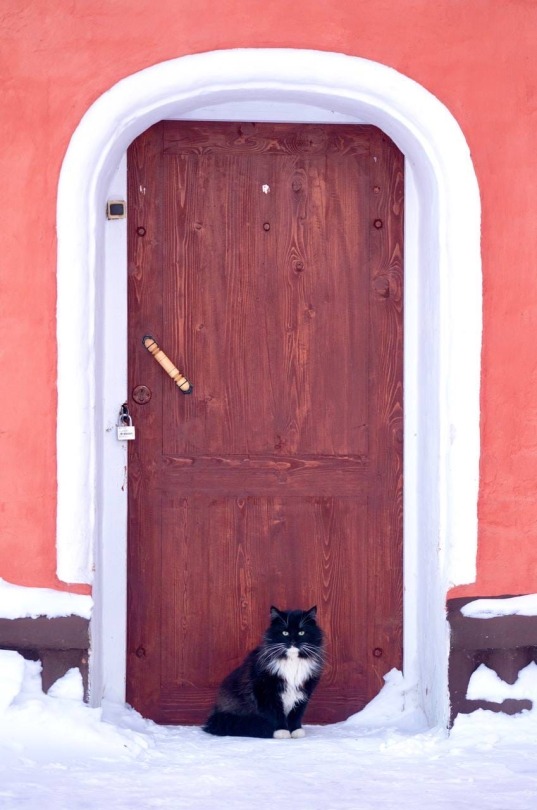

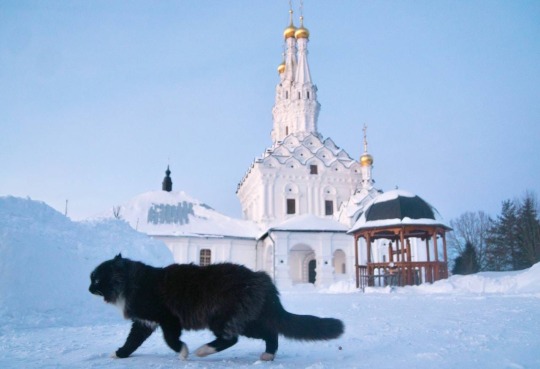

This cat lives in the Ascension Church of the St. John the Baptist monastery in Vyazma, Russia. His name is Persik (Peach).
10K notes
·
View notes
Text

Ожидание...
LG Q6a
#octopus#abandonedgallery#collecmag#fivesixmag#ourmomentum#paperjournalmag#somewheremagazine#spi_shadows#cinematography#rus_atmos#pokoleniepepsi#yebenya#yebenyagram#yebenyalive#vyazmalife#vyazma life#vyazma#фото#фотография#фотокарточка#фотодляроссии#уютные_ебеня#эстетикаебеней#романтикагородскихокраин#уютныеебеня#типопленка
14 notes
·
View notes
